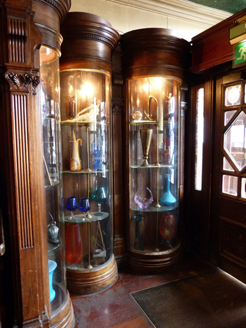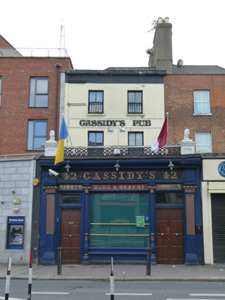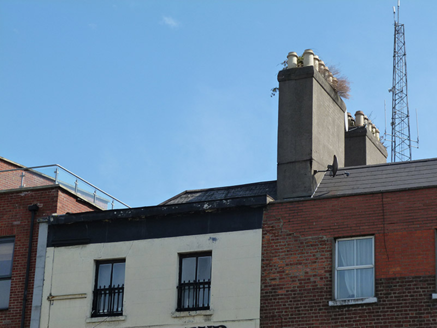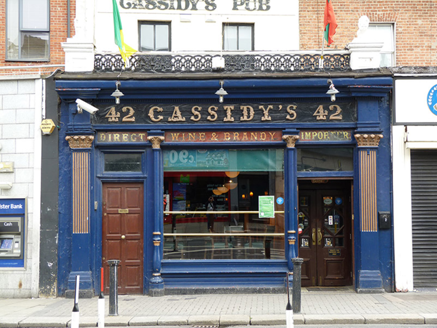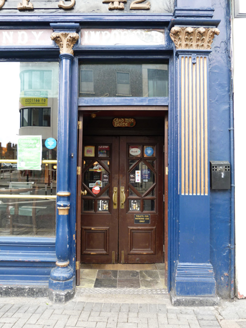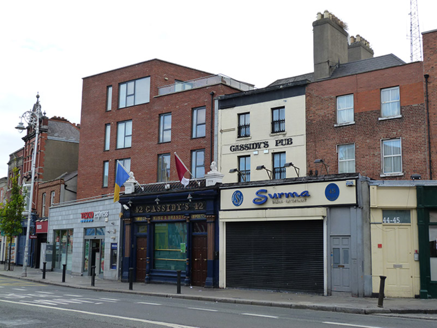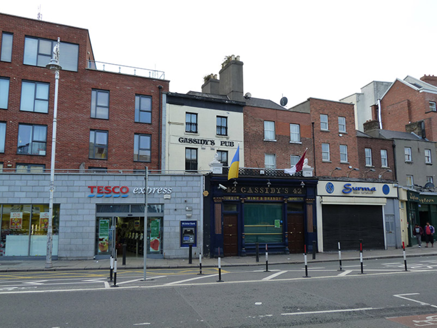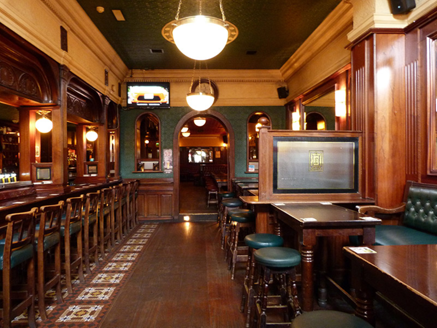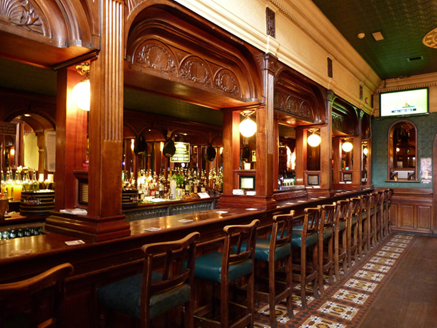Survey Data
Reg No
50920208
Rating
Regional
Categories of Special Interest
Architectural, Artistic, Social
Previous Name
Delahunt
Original Use
House
In Use As
Public house
Date
1780 - 1800
Coordinates
315626, 232908
Date Recorded
13/08/2015
Date Updated
--/--/--
Description
Attached two-bay three-storey former house, built c. 1790, with projecting single-storey public house to west elevation added c. 1890. M-profile pitched roof, hipped to north end hidden, behind rendered parapet with rendered concrete coping, rendered chimneystacks to south party wall having yellow clay pots. Rendered walls. Square-headed window openings, masonry sills and replacement two-over-two timber sash windows with cast-iron window guards affixed to second floor reveals. Projecting pub shopfront comprising central display window, upper floor access door to north and recessed pub door to south, all framed by fluted timber pilasters with foliate capitals supporting timber fascia with raised and gilded lettering, surmounted by timber cornice. Plate-glass display window with hand-painted upper panes, moulded stall-riser over masonry plinth, flanked by slender colonnettes with foliated capitals. Square-headed door openings with plain overlights; replacement door to north, double-leaf glazed timber door recessed to south-end. Shopfront parapet topped with cast-iron cresting, terminated by diminutive lions on panelled pedestals. Carved timber bar, dentilled plaster cornice, and glazed mahogany display cabinets to interior. Street-fronted, located to east side of Camden Street.
Appraisal
The original house was built as a pair with No. 43 (50920209), and the shopfront was added during the late Victorian period, reflecting the commercial development which characterised Camden Street Lower during the period. The building formed part of a chain of public houses owned by the Delahunt's, who were a family of Edwardian tea, wine and spirit merchants. This well-executed example of a High Victorian public house retains a number of well-executed original interior and exterior features, including the carved colonnettes and pilasters, and some original joinery and plaster work. Camden Street is part of an ancient routeway named St. Kevin’s Port leading south from the city. It was renamed Camden Street in the late eighteenth century, possibly commemorating Charles Pratt, the first Earl Camden.
